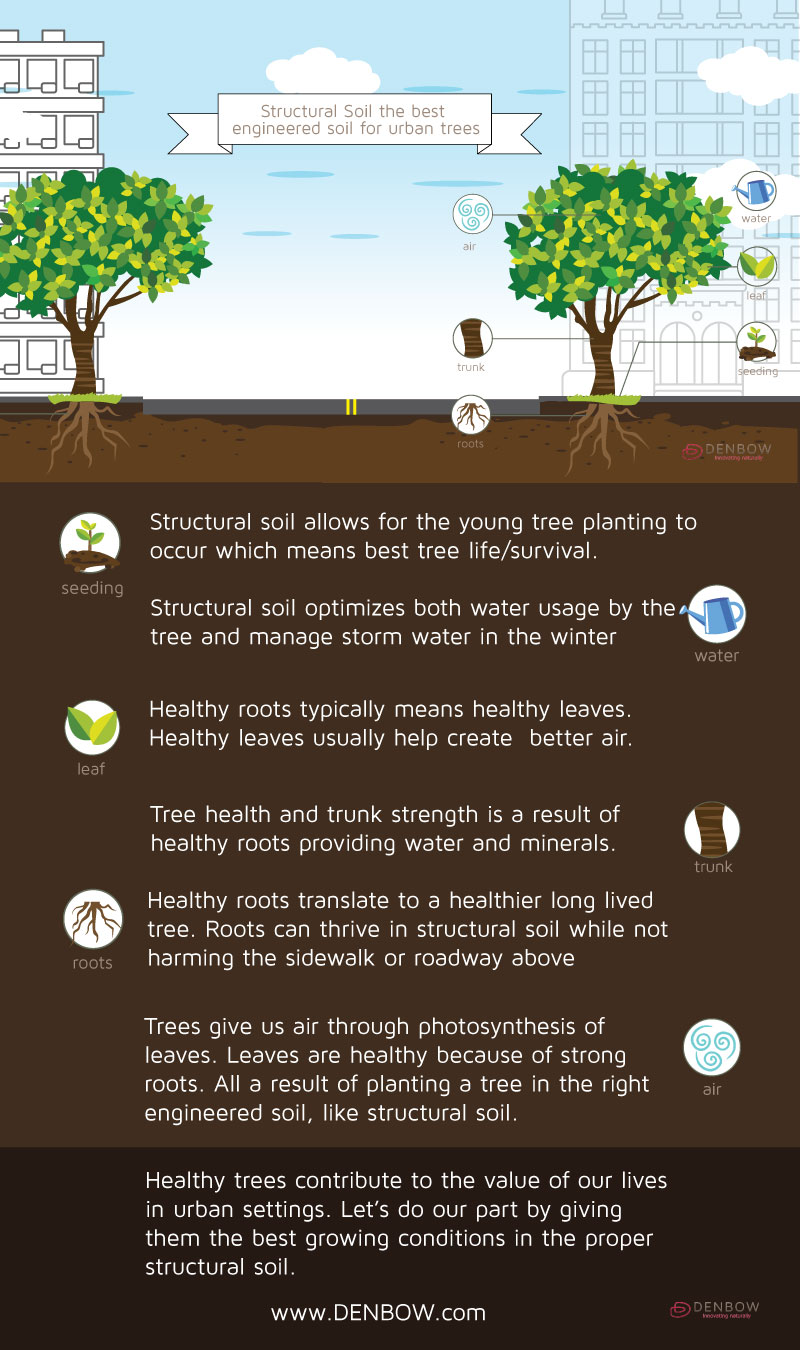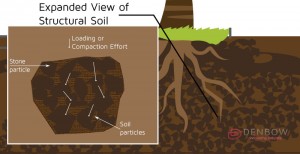A Guide to Working In and Around A Fish Habitat
/0 Comments/in Construction Landscape Journal, Corporate News, Environment, Municipal and Infrastructure Journal, Sediment Control, Streambank Restoration /by Tanya RichardsRiparian Revegetation
/0 Comments/in Blower Truck Services, Construction Landscape Journal, Environment, Erosion Control, Green Infrastructure, Municipal and Infrastructure Journal, Projects, Streambank Restoration, Sustainable Development /by Tanya RichardsStructural Soil – Why is it So Effective? Ask Tom series
/0 Comments/in Construction Landscape Journal, Environment, Soil, Sustainable Development /by Tanya RichardsStructural Soil: an infographic
/0 Comments/in Corporate News, Landscape Journal, Soil, Sustainable Development /by Tanya RichardsStructural Soil: an Infographic

Share This Infographic on Your Site
Save
Save
Save
Structural Soil for Urban Trees
/0 Comments/in Green Infrastructure, Landscape, Soil, Sustainable Development /by Tanya RichardsStructural Soil for Urban Trees
Currently most urban trees are planted directly into existing compacted urban soil or tree pits with limited root space. Trees that are planted in areas surrounded by paving tend to struggle for air space and usually decline well before they should. Where soil volume is limited by pavement, tree roots suffer and tend to take the path of least resistance searching for air, usually in and around pipes, foundations, or to the surface. Healthy trees need a large volume of non-compacted soil with adequate drainage and aeration and reasonable fertility.
While the need and desire for large trees in the urban landscape still is the desired intent, the trees do not survive long enough to fill the need. Not planning for root growth is ignoring the biological requirements of trees and is not economical or environmentally prudent. The failure to provide adequate soil for both drainage and root growth is critical to the life of the tree and without an engineered soil specific to this application, trees have a shortened life span and may die. Ensuring a good supply of air to the tree roots is essential for satisfactory tree growth, however in urban situations, the movement of air into the soil is often restricted. By providing additional root space below the pavement in what otherwise was compacted urban soil, Structural Soil can allow most newly planted trees to have a chance for healthy growth. This mix consists of 80% 75 mm angular clear aggregate and 20% approved sandy clay loam. The aggregates bear the load, providing the structural stability for the pavement above. The angularity of the rock create for the non-compacted soil, providing space for air, water and nutrients the roots, as well as provide for future root expansion. Engineered structural soil provides a resource for root growth beyond the traditional tree pit, allowing for much stronger root growth and ongoing tree health. 
Denbow has been providing structural soil to many municipalities within the Greater Vancouver and Fraser Valley area. These departments use Denbow’s manufactured soil to allow city planners and engineering departments to add trees for the health and beauty of urban communities.
Contact Denbow’s soil experts today to find out more about how structural soil can work in your city or municipality.
Save
Save
Proper Soil Testing Methodology – Ask Tom
/0 Comments/in Construction Landscape Journal, Environment, Soil, Sustainable Development /by Tanya RichardsSave
9 Benefits to Using Compost for Erosion and Sediment Control
/0 Comments/in Environment, Erosion Control, Municipal and Infrastructure Journal, Sediment Control, Slope Stabilization, Stormwater Management, Sustainable Development /by Tanya RichardsLife Cycle of the Chafer Beetle
/1 Comment/in Construction Landscape Journal, Corporate News, Environment /by Tanya RichardsLife Cycle of the European Chafer Beetle
The European chafer beetle originated in continental Europe but is now an invasive species found in temperate climates in North America, where they are often called June bugs. The large grubs of the chafer feed on the roots of both wild and cultivated cool-latitude grasses, which has made them a critter-non-grata on North American lawns.
Knowing the beetle’s life cycle can help you defend your lawn against an infestation. Read on to find out more.
The chafer’s life cycle
The chafer’s life cycle is one year. The imago (adult) stage is only 1–2 weeks long, with adult beetles growing to approximately 13–14 millimetres (0.51–0.55 in) in length. The adult chafers emerge from the ground in late spring and mate in large swarms, usually on shrubs and low trees. They are most active on warm, clear nights when the temperature is over 19C (66F). The beetles come out of the ground at about 8:30 pm, mate through the night, and then return to the soil before the sun rises; they may return to the trees to mate again several times over the mating period.
Female chafer beetles lay between 20–40 eggs over their lifespan; the eggs are laid about 5–10 centimetres (2.0–3.9 in) deep in moist soil, and then take 2 weeks to hatch. The grubs hatch by late July. In frost zones, the grubs feed until November and then move deeper into the soil. In frost-free areas, however, the larva feed all winter. Intense feeding occurs from March through May. Then, in early June, the grubs move deeper again, from 5 centimetres to 25 centimetres (2.0–9.8 in), where they form earthen cells and pupate. The pre-pupal stage lasts 2–4 days and the pupal stage lasts 2 weeks. By June, the new beetles begin emerging from the ground.
Beware other critters, too
Not only do the larvae feed on roots, wreaking havoc on lawns, but they attract local fauna like crows, foxes, and raccoons, who dig up the grass in search of the grubs. So, in addition to root damage, homeowners also have to worry about destruction caused by larger creatures.
Why is it important to know about the life cycle of the Chafer beetle?
Knowing the life cycle of the Chafer Beetle helps illustrate is when the beetle is most susceptible to treatment which will help exterminate the pest. The beetle’s most susceptible time is when it is the egg form in late July. Although treatment can help in early times in the season, July is the most optimal time to apply your treatment. It’s also important to note that treatment should not be a one time thing.
In order to ensure the treatment and the extemination of the beetle, it is recommended to apply multiple treatments to your lawn or garden.
We hope you enjoy the article and download the infographic (at the bottom). If you liked it, please feel free to share!

Check out the infographic here
Earth Day 2017
/0 Comments/in Community, Leadership, Sustainable Development /by Tanya Richards
“We don’t inherit the earth from our ancestors. We borrow it from our children.”
Chief Seattle
Save
Save

